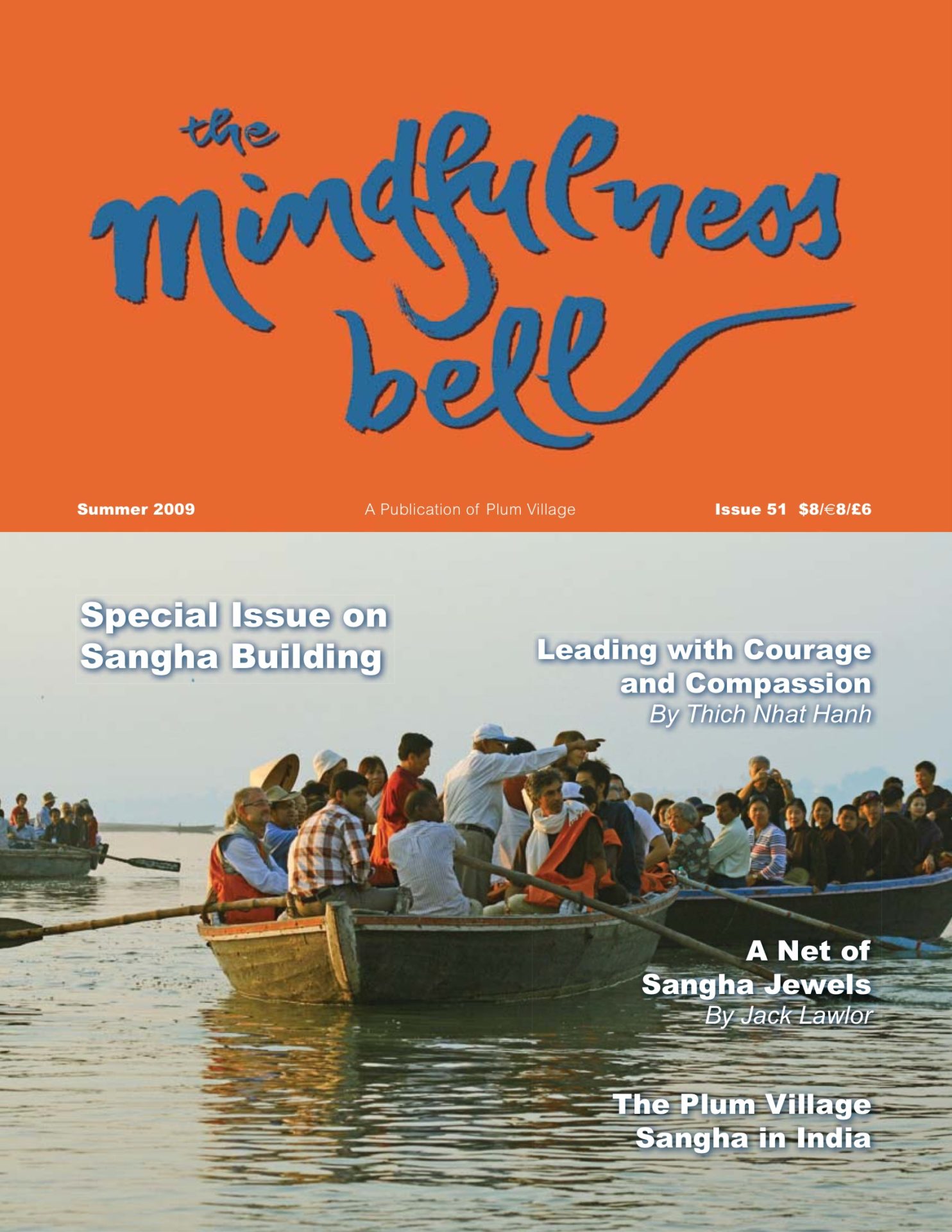By Deborah Brooks
We used to make decisions by consensus in long meetings of almost our entire Sangha, every two months or so. It was often a frustrating and arduous process that—for me—did not preserve peace and well-being in the Sangha. It would take half an hour or more to hear every person’s view on the matter being considered. Some people wanted to talk more than once, or took a long time to express their view.
By Deborah Brooks
We used to make decisions by consensus in long meetings of almost our entire Sangha, every two months or so. It was often a frustrating and arduous process that—for me—did not preserve peace and well-being in the Sangha. It would take half an hour or more to hear every person’s view on the matter being considered. Some people wanted to talk more than once, or took a long time to express their view. Arriving at consensus was difficult and it was not unusual to run out of time or energy and leave important decisions hanging. As painful as the meetings were, it was excruciating when the next meeting—with a different set of Sangha members—reviewed and often revised all the work of the previous meeting.
We created the Continuing Care Committee (CCC) several years ago to make our decision-making a more wholesome experience and to give us a way to make decisions between meetings. We wrote guidelines for mindful meeting so that we could make doing business a practice [see “Mindful Meeting Guidelines”]. This committee is charged with moving the Sangha toward its own goals and aspirations, which are identified by the entire Sangha at an annual meeting every fall. Goals may range from the general (“I’d like us to do more singing”) to the specific (“I want us to find a different venue for our next retreat”). For the rest of the year, the Sangha entrusts the CCC to coordinate how we will achieve the directions we have chosen.
The CCC consists of six to eight members who volunteer at the annual meeting. Anyone in the Sangha can volunteer, but we try to achieve a balance of newer members with veterans. The commitment is to attend monthly meetings of the committee for a year; some people serve for several years while others come and go, so there is a constant flow of energy into and out of the committee. CCC meetings are open to any Sangha member, but decision-making is left to CCC members. The Sangha’s agreement is to trust committee members to make decisions, and not to question or protest once a decision has been made. This has worked beautifully for us, and is much more efficient than the long meetings of yesterday.
I have served twice on the CCC, and for the most part have found it to be a very light commitment. The committee does not actually carry out the Sangha’s wishes. Instead, it identifies people in the Sangha who are interested in certain projects (usually the people who suggested the projects at the annual meeting) and supports each Sangha member in carrying his or her project forward, either as an individual or as a team leader.
For instance, if the Sangha has decided to sponsor a four-day retreat, it is not the CCC’s job to organize the retreat. Instead, CCC members identify the person or people interested in serving on the retreat committee, and talk to them about what kind of support they need. It’s about communication – conversations. We do not allow ourselves to become overwhelmed or resentful. If no one can be identified to facilitate a project that was named at the annual meeting, the assumption is that there is not sufficient time or interest in the Sangha to do it, and we let it go.
Sometimes it is lovely and fun to go to the meetings. What could be more beautiful than drinking tea and talking to members of your Sangha? Other times I have been frustrated and cranky. Once, only two people made it to the meeting. The committee had a couple of big discussions about commitments and attendance after that! I have become irritated when it seemed like people were not listening, and important information had to be repeated. These are practice opportunities, and I have learned and grown from them as much as I have from sitting at ease, breathing, and drinking tea with other CCC members. Our meetings are great opportunities to practice breathing, smiling, deep listening, and being mindful of mental formations. They are also wonderful opportunities to deepen relationships within the Sangha.
Deborah Brooks, True Realization of the Essence, practices with Laughing Rivers Sangha in Pittsburgh, Pennsylvania. Sangha member Tony Silvestre contributed to this article.

